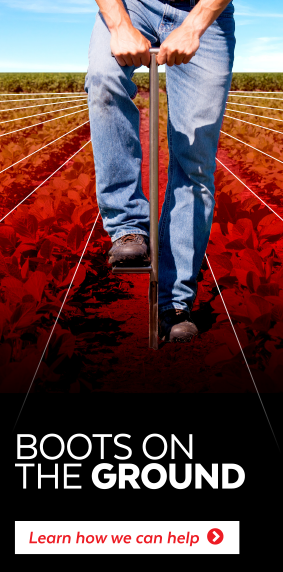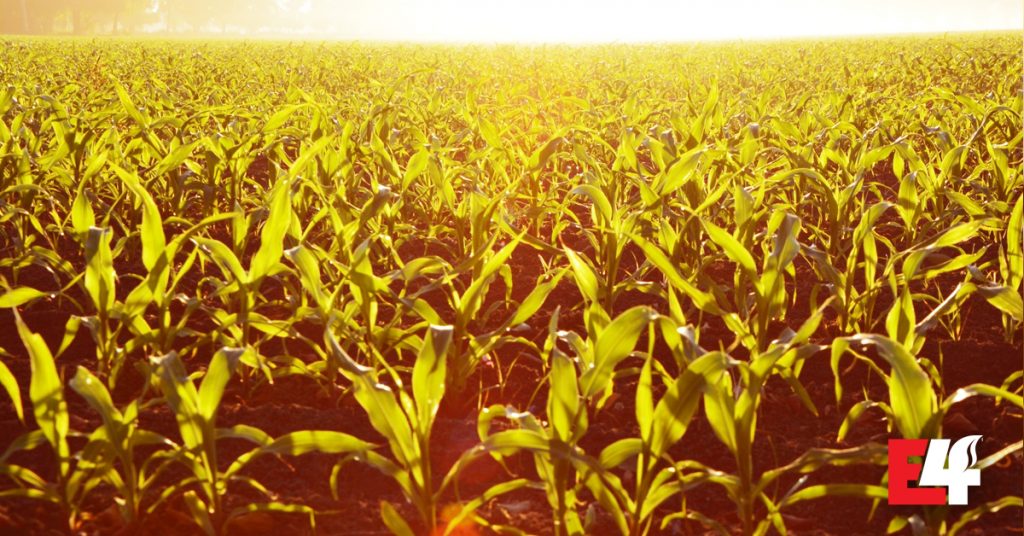When spring rolls around and the conditions appear promising for planting, it is tempting to get out in the field as soon as possible to get the crop in. However, when caution is thrown to the wind, it can significantly impact how well your stands perform. Ultimately, poor crop stands lead to lower yields. To shed some more light on this subject, the team at E4 Crop Intelligence will discuss the effects, our case study, and the factors of non-uniform corn emergence. We’ll also highlight what options farmers have to help reduce the likelihood of this situation occurring in the field.
Effects of Uneven Emergence
Ideally, the plan is to have a synchronized crop emergence. When the seedlings break the soil surface, they transition to utilizing the sunlight to sustain themselves. For corn, the stand can quickly grow to capture as much sunlight as possible and the plant canopies out. Crops that emerge a day or two later have to compete to attain the same amount of sunlight. But as the earlier corn continues to grow, they can easily shade out the later emerging plants.
A one- or two-day difference in corn emergence means they have less exposure to sunlight, leading to the production of smaller ears and a measurable reduction in overall yield. To show just how much of an impact this can have, E4 carried out a corn emergence study.
E4 Crop Intelligence Corn Emergence Case Study
E4 conducted a test to see what the yield difference was between two fields with a population of 25,000 plants per acre. One field had late emergence (24-48 hours difference), and the second field had uniform emergence. The results were conclusive in regards to the negative effect uneven emergence has on yields.
First, we took four ears from each test plot and averaged the number of rows and kernels on each one.
| Uneven Emergence (24-48 Hours Late) | Uniform Emergence | |||
| Rows | Kernels | Rows | Kernels | |
| 14 | 35 | 16 | 37 | |
| 18 | 33 | 18 | 32 | |
| 20 | 33 | 18 | 36 | |
| 18 | 28 | 18 | 34 | |
| Tot. | 70 | 129 | 70 | 139 |
| Avg. | 17.5 | 32.25 | 17.5 | 35 |
Next, averages for each group were multiplied by 25 (representing the plant population of 25,000 plants per acre). Then, that result was divided by 90 (representing 90,000 kernels per bushel) to determine the estimated yield in both groups.
| Uneven Emergence (24-48 Hours Late) | Uniform Emergence | |
| (17.5 x 32.25 x 25) ÷ 90 | (17.5 x 35 x 25) ÷ 90 | |
| Est. Yield | 156.77 Bu/A | 170.13 Bu/A (+13.36 Bu/A) |
In conclusion, with the two plots that E4 studied, corn that is uniform produces more bushels per acre (in this case, +13.36 Bu/A more) than corn that emerges unevenly.
Reasons for Uneven Emergence
There’s a range of different factors that can lead to uneven emergence. A couple of the most important and common reasons are soil moisture variability and soil temperature variability. When soil moisture is not consistent (either too wet or too dry in spots), it can lead to better germination for some seeds than others in the field.
Factors of soil temperature are not only brought on by the weather but also by residue coverage. Disproportionate residue coverage can significantly impact soil temperature. Seeds under larger residue amounts are exposed to much cooler soil temperatures than those with lighter coverage. Even minor temperature differences can make a big impact on germination.
Recommendations for Steering Clear of Uneven Emergence
To mitigate the impacts of non-uniform emergence, consider the following practices and steps during planting season:
- Ensure planter meters are calibrated
- Make down pressure adjustments on the planter
- Avoid excessive tillage that could dry or compress the seedbed
- Plant when soil temp is at or above the 50 degree F threshold (remember, residue management impacts temperature consistency)
- Check seed depth to ensure planter is hitting the desired seed depth
- Evaluate closing wheels, and make sure seed firmers are set correctly
- Plant at speeds determined by your planter’s capabilities to avoid skips
- After planting, if soil crusting is preventing uniform corn emergence, use a rotary hoe
During harvest, consider these approaches:
- Adjusting combine setup for better residue management to ensure broad distribution of residue (tuning the straw chopper for stalk size, discharge width, etc.)
- Be conscious of harvest traffic on the field to mitigate soil compaction
- Fall tillage should include a plan to have uniform discing depth, chisel plow depth, or stalk chopping height and particle size
In the unfortunate event that your fields are impacted by uneven emergence, please reach out to our expert team here at E4 Crop Intelligence by calling 712.647.2666. We will work with you to help guide you in the decision-making process and recommendations for your next course of action.
For more information about E4 Crop Intelligence’s services, please visit www.e4cropintelligence.com.

